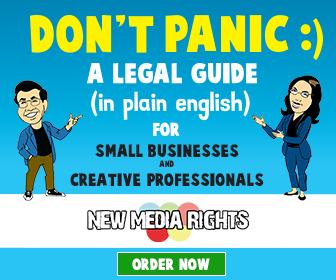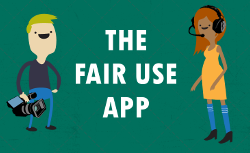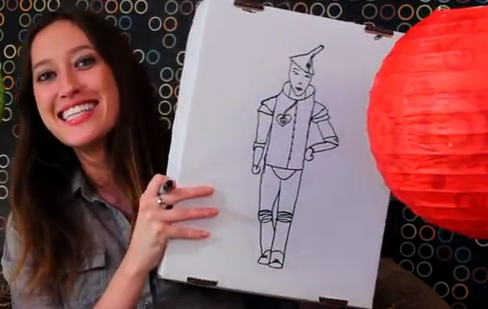Does Oregon's reporter shield law apply to an independent journalist who publishes online? That question looks set to be answered, thanks to the refusal of Tim Lewis to comply with a grand jury subpoena for his video of a May 30, 2008, demonstration in Eugene, Oregon, where police tasered an 18-year-old protester.
While covering the anti-pesticide protest for his YouTube channel Picture Eugene, Lewis filmed part of the police's arrest of Ian Van Ornum, a protester from the University of Oregon. According to The Register-Guard, a Eugene newspaper:
Lewis said he tried to begin recording when uniformed officers first approached Van Ornum. But he didn’t realize that he had previously protected the tape in his camera from being recorded over.
Lewis said he wasn’t able to slip in a new tape until after a Eugene officer used a Taser stun gun to subdue Van Ornum. Scenes of the teen laying on the ground while handcuffed are included in footage Lewis posted online on YouTube.
The Lane County District Attorney's office convened a grand jury to investigate whether Van Ornum should face criminal charges and subpoenaed Lewis for his video of the incident, including both the portion he published and any unpublished material. But Lewis, a self-described independent journalist and "a fixture in the Lane County anarchist/activist community" according to the Register-Guard, refused, claiming that Oregon's shield law protects him from compelled disclosure of his newsgathering materials. He told the Register-Guard, "I don’t have a whole bunch [on the tape] that would interest them. . . . But I can’t set a precedent by giving it to them."
In fact, Lewis's stance may set a precedent by not giving it to them. While Oregon's shield law is strong and offers nearly absolute protection to reporters, the courts have not yet applied it to bloggers and other online, independent journalists. Comments from Lane County District Attorney Doug Harcleroad suggest that he doesn't believe Lewis is protected by the law. Harcleroad told Eugune's KVAL: "We don't know the facts around whatever he does . . . . I don't know whether he's a journalist or not. We haven't actually looked at the law on that in any great detail."
Interestingly, Harcleroad stated eight years ago that Lewis was a journalist, according to The Register-Guard. In 1999, Lewis was arrested for disorderly conduct and interfering with an officer while he was filming at another protest for a cable access show. The state dismissed charges against Lewis, however, because "there were some problems" with charging him, according to a statement by Harcleroad in a February 2000 article in The Register-Guard. Elaborating at the time, Harcleroad added that "Mr. Lewis is a reporter, and he was reporting."
In any event, whether the label "reporter" applies to Lewis does not determine the outcome of the legal question. Oregon's shield law, Or. Rev. Stat. § 44.520, extends beyond the usual boundaries of professional reporting to protect all acts of reporting. Thus, what matters is whether Lewis's activities fall within the statute.
According to section 44.520(1)(b), "No person connected with, employed by or engaged in any medium of communication to the public" can be forced by the government to surrender unpublished material obtained and prepared "in the course of gathering, receiving or processing information for any medium of communication to the public." Thus, Lewis will have to show that (1) he is "connected with, employed by or engaged in" a "medium of communication," and (2) he obtained or prepared the unpublished portions of his video in the course of gathering or processing information for that medium.
Regarding "medium of communication," section 44.510 (2) states that the term "has its ordinary meaning" and "includes, but is not limited to" (emphasis added) a variety of media types, including newspapers, magazines, television broadcasters, and the like. YouTube would seem to be a "medium of communication" under the term's ordinary meaning. It is, after all, a means of disseminating video information to the public at large.
But is Lewis "connected with, employed by or engaged in" YouTube? Being "employed by" a medium is the most traditional relationship a reporter may have with a medium, but Lewis clearly was not "employed by" YouTube. "Engaged in" arguably describes a less formal financial relationship, like that a freelancer might have with a newspaper, but again, such a relationship didn't exist between Lewis and YouTube. So we're left with the broadest, least formal category: "connected with." It certainly seems feasible to describe Lewis as "connected with" YouTube. He produces videos which he uploads to the site, where he has his own channel. So Lewis ought to be able to show that he is "connected to" YouTube.
Satisfying the second aspect of 44.520(1)(b), that the unpublished portion of Lewis's video was prepared or obtained in the course of gathering, receiving or processing information for a medium of communication to the public, should be simple, as Lewis shot the video in anticipation of communicating it, or parts of it, to the public on his YouTube channel. What's more, the function he performed that day fits the traditional understanding of "newsgathering" -- he was recording information about current events for dissemination to and consumption by the viewing public. So, Lewis appears to satisfy 44.520(1)(b)'s criteria.
The District Attorney isn't apt to be able to offer a viable counterargument. He could say that Lewis was actually part of the protest, rather than gathering news about it, but that doesn't appear to have been the case as a factual matter. The District Attorney might also argue that being "connected with" YouTube requires something more than simple use of the website as a video host; rather, Lewis would have to show something more akin to the sorts of relationships that the other two categories entail. But that also seems unlikely - employment and engagement appear to exhaust the possible financial relationships that one might have with a medium, so the third option must mean something looser. Lewis's status as a YouTube user is a looser one, but still one that connects him with YouTube.
So it would seem that the court should rule for Lewis and quash the subpoena. Were I the judge, my only concern at this point would be that ruling this way might overexpand the shield law. Certainly, it should protect the materials of newsgatherers, but should it protect any kind of video at all that is posted to YouTube? If a college student, in the midst of making yet another Mentos-and-soda YouTube video, should happen to record a crime occuring, is it reasonable for the shield law to prevent law enforcement officials from subpoenaing her evidence? There's no newsgathering activity behind the student's video, but she is arguably "connected to" YouTube in the same way Lewis is, and the crime video was obtained in preparation of her video for publication on YouTube. Thus, she would have the shield law's full protection, despite her situation being a far cry from what the law was intended to protect: newsgathering.
Of course, the court may not worry about the possible overexpansion of the shield law's immunity. But the sorts of media publication available now were unimaginable in 1970s, when the Oregon shield law was largely written, and it seems unlikely that the shield law's authors meant to protect much of the material that users post on YouTube today. As a result, a ruling for Lewis could result in headaches down the line that either the courts or the legislature would have to deal with eventually. Lewis's conduct ought to be protected under the shield law, but the next case may not be so clear.
You can follow further developments about Oregon's subpoena of Lewis in our Legal Threats Database entry: Oregon v. Lewis.
(Arthur Bright is a second-year law student at the Boston University School of Law and a CMLP Legal Intern.)




